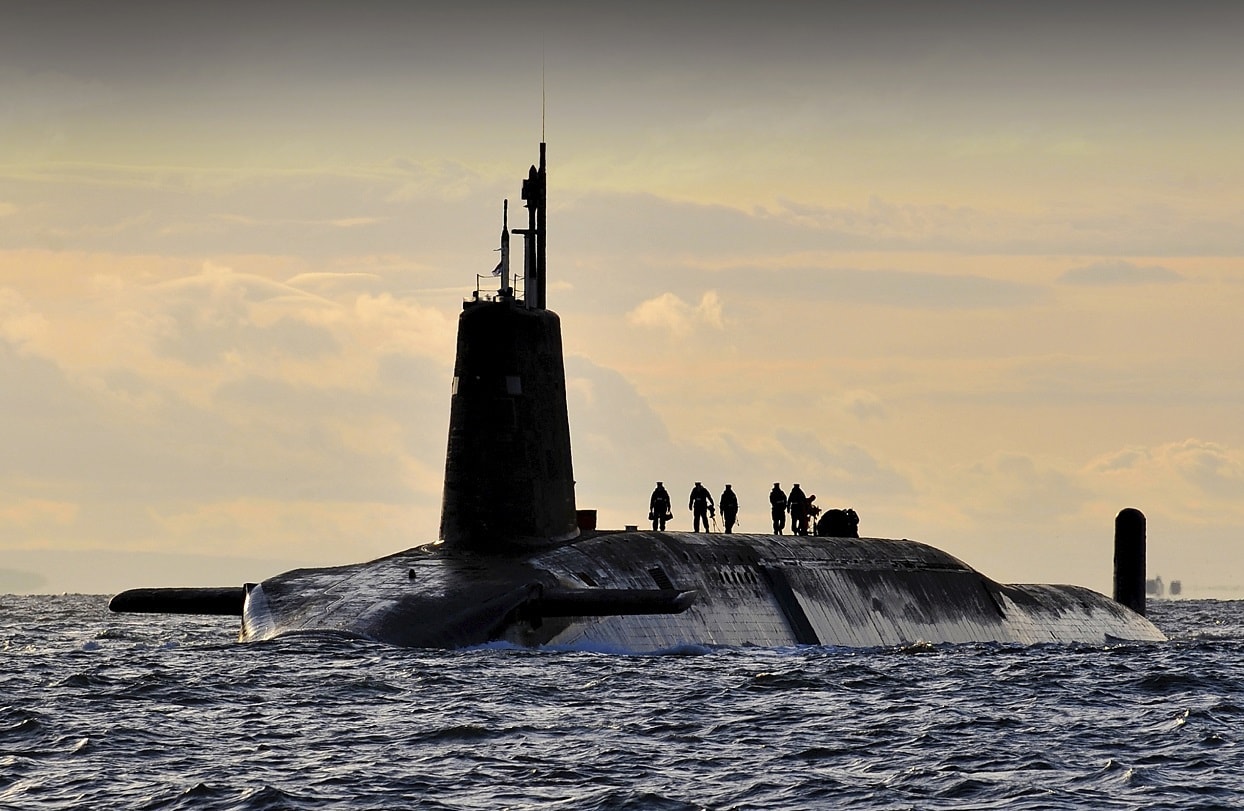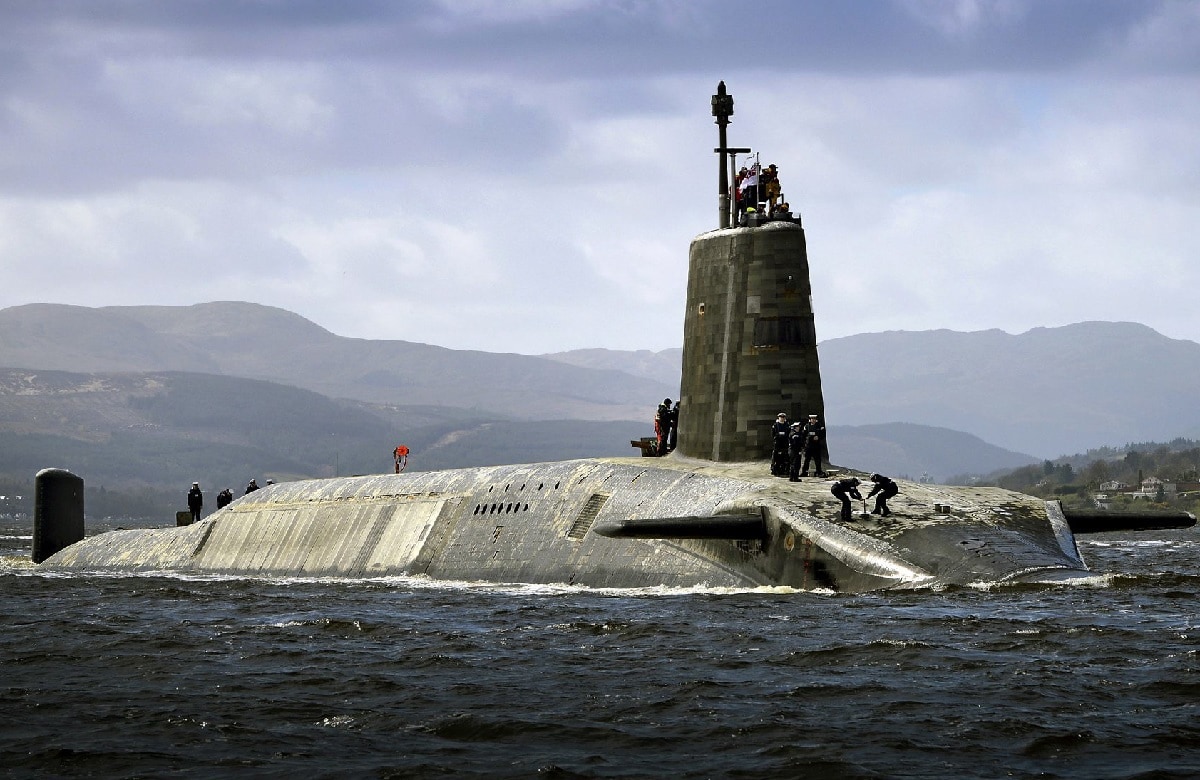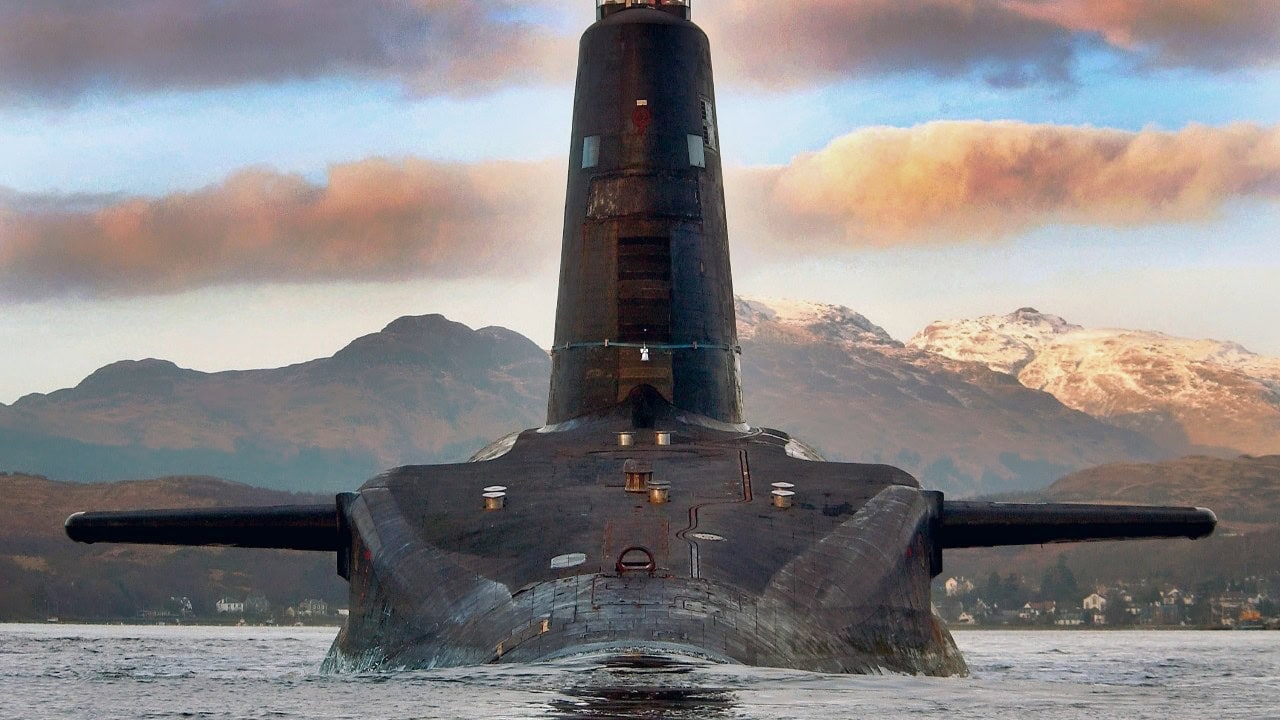Key Points: The US and UK engage in vital, highly secretive collaboration to maintain nuclear deterrence through their ballistic missile submarine (SSBN) fleets—a partnership of increasing importance given current global tensions.
-The UK’s four Vanguard-class SSBNs operate similarly to the US Ohio-class, both deploying Trident II D5 nuclear missiles to ensure a credible second-strike capability.
-This deep cooperation extends to their next-generation replacements, the US Columbia-class and UK Dreadnought-class, which will uniquely feature a joint, common missile compartment for the life-extended Trident II D5 “E” missile, solidifying their shared commitment to strategic stability for decades.
The Vanguard-Class Could Be Used in a Nuclear War on Russia
The threat of massive, catastrophic destruction and the potential annihilation of entire cities is the primary intent of any nuclear deterrence posture aimed at ensuring peace.
This scenario is the fundamental “paradox” of nuclear weapons, as they are built with the hope that the weapons will never be used.
This strategic deterrence equation, considered fundamental to the current global order and status quo, has increasingly been threatened due to the War in Ukraine.
The growing seriousness of a nuclear threat only further underscores the US need for large-scale yet highly secretive international collaboration.
This is why the UK’s Vanguard-class SSBN nuclear-armed ballistic missile submarines are so critical, as they operate in a much similar capacity to the US Ohio-class.
Both boats fire well-known Trident II D5 nuclear missiles, yet the Ohios can carry 20 as opposed to the Vanguard-class capacity of 16.
Ohio-Class & Vanguard Submarines
Much like the US Ohio and emerging Columbia-class boats, the Vanguard submarines are likely tasked with quiet, clandestine missions patrolling strategically vital areas of the world.
The intent, of course, is to ensure that nuclear-armed, difficult-to-detect submarines are in position to launch a massive, devastating retaliation upon any nation that attacks with a nuclear weapon.
The reality of a large-scale second-strike response is intended to deter, stop, or prevent any nation or actor from considering the use of nuclear weapons.
The British now operate four Vanguard submarines, the HMS Vanguard, HMS Victorious, HMS Vigilant, and HMS Vengeance; the boats are 150 meters long and displace 15,900 tons with a towed sonar array and a Pressurized Water Reactor.
They also submerge with hull-mounted active and passive mode search sonar capable of detecting essentially “everything” at a range of 50 miles. The submarines also operate with two periscopes combined into an optronic mast.
Interestingly, while the submarines’ active and passive sonar is mounted on the ship’s hull to offer either functionality, the Vanguard-class boats also use a “passive” search capability in the form of a towed sonar array.
Passive sensing means the sonar is capable of “detecting” or “listening to” threat objects without releasing an acoustic signal, which could give away the submarine’s location. Generating an acoustic signature through forward-sent emissions or acoustic “pings” could enable an adversary to discern the location or direction of a secret submarine engineered to lurk quietly in critical locations worldwide.

Nuclear submarine HMS Vanguard arrives back at HM Naval Base Clyde, Faslane, Scotland following a patrol.

Vanguard-class. Image: Creative Class.
Columbia-Dreadnought Submarines
The undersea US-UK nuclear deterrence collaboration is likely significant, as it is now informing both countries’ plans for the 2030s.
The US is building its new Columbia-class submarines, which aligns with the UK’s now-developing Dreadnought-class.
The Dreadnought and Vanguard-class submarines will integrate a joint, common missile compartment engineered to house Trident II D5 missiles.
Trident II D5 “Life Extension”
The US Ohio-class boats are now armed with an upgraded Trident II D5 nuclear missile, which will also arm the UK’s Dreadnought-class boats.
The US Navy has spent years working with Lockheed on a Trident II D5 life-extension program designed to ensure the decades-old weapons are upgraded, modernized, and sustained into future decades.
The Trident II D5 “E”s, as they are called, are being engineered to replace the standard Trident II D5 with improved electronics, firing circuitry, and technology intended to arm the Columbia-class boats.
About the Author: Kris Osborn
Kris Osborn is the Military Technology Editor of 19FortyFive and President of Warrior Maven – Center for Military Modernization. Osborn previously served at the Pentagon as a highly qualified expert in the Office of the Assistant Secretary of the Army—Acquisition, Logistics & Technology. Osborn has also worked as an anchor and on-air military specialist at national TV networks. He has appeared as a guest military expert on Fox News, MSNBC, The Military Channel, and The History Channel. He also has a Masters Degree in Comparative Literature from Columbia University.

